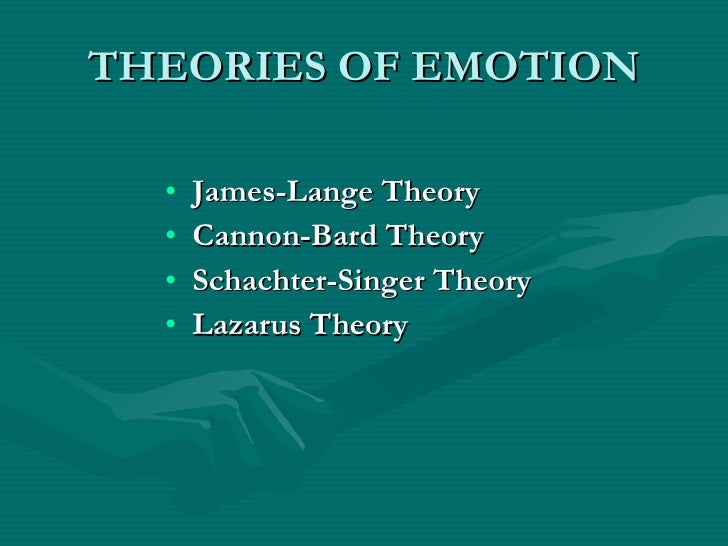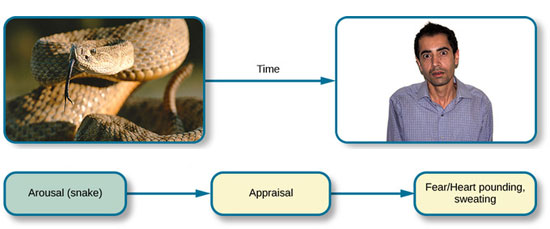
Further, emotions should not be modelled simply as determinate responses to separately defined meanings or as communicative acts driven by internal goals, but also as situated adjustments to unfolding events and as active ways of transforming or producing meaning in collaboration with other people.

From this perspective, relational meaning is often implicated in the causes, content, and consequences of emotion but its roles in these phases of the transaction do not always coincide. This paper reviews arguments and evidence for and against these four approaches and attempts to integrate their insights by sketching out a view of emotions as functional modes of engagement with the practical and social environment (relation alignment), whose operation is transformed by the imposition of societal prescriptions and descriptions. For communicative theorists, emotions are flexible strategies for conveying meanings to others. For attribution theorists, meaning is applied to emotional episodes after the fact, and is not an intrinsic part of any emotion-generative mechanisms. For transactional theorists, meaning emerges bottom-up in parallel with the real-time consolidation of the response syndrome. We conclude by considering both the potential value of relational appraisal models, and future directions in the development of these models.Īt what stage in the emotion process do people apprehend the relational meaning of their encounters with the practical or social environment? For many appraisal theorists, meaning (usually or always) comes first, shaping the activation of functional response modes by top-down influence. In the third, as a precursor to developing a true relational model, we examine another appraisal component, emotion-focused coping potential, from a more dispositional perspective. In two, we start with a particular appraisal component, motivational relevance and problem-focused coping potential (Smith & Lazarus, 1990), respectively, and describe and test the relational model proposed for that component. Arnold speculated that cognitive appraisals only signal the emotional and physiological responses to occur. In this article, we review three examples of our efforts toward developing relational appraisal models. Relational models of appraisal attempt to describe the situational and dispositional antecedents of appraisals, and should allow one to predict such individual differences. Again, this differs from James-Lange who suggested physiological and behavior changes occurred first, following by quick cognitive appraisals, and then followed by subjective feelings and slow cognitive appraisals.According to appraisal theory, emotions result from an individual's meaning analysis of the implications of his/her circumstances for personal well-being, and individual differences in emotion arise when individuals appraise similar situations differently.

Simultaneous means after the eliciting event occurs, all four components change at the same time. This contrasts with James-Lange who said both physiological and behavior changes determined our subjective feelings. So, an increase in heart rate doesn’t influence our subjective feelings. This facilitated the development of subjective theories of stress, and more recently, theories of emotion that center on how people appraise the circumstances. (1977) A topology of styles of loving, Personality and Social. Separate means the presence of each component does not influence the other components. Thus, for Cannon and Bard, changes in physiology, behavior, subjective feelings, and cognitive appraisal occur separately, but simultaneously. Through their research, Cannon and Bard concluded that the body is not required to experience an emotion. Together, Cannon and Bard conducted experiments to test their theory.

This means that the brain cannot use only our bodily change to identify the emotion label – something else must tell us whether we are fearful, angry, or joyful. For example, when your heart is racing you may be experiencing fear, anger, or joy. Cannon’s thesis was that for several different discrete emotions, animals and people show the same bodily changes. Mrs Lazarus Mrs Midas Mrs Sisyphus Originally Penelope Pilates.

These findings directly contradicted James-Lange, who suggested that information about physiological and behavior changes was quickly sent to the brain for processing. The dolphins of the poem are clearly capable of deep thought and complex emotion. In his experiments on cats and other animals, Cannon witnessed emotional responses even though the brain could no longer communicate with the body (see Bard’s sham rage findings above). The transactional model depicts stressful encounters in the following way (Lazarus and Folkman 1984, 1987 ): Person variables (e.g., beliefs, self-esteem) and environmental variables (e.g., demands, constraints) are the antecedents that affect the mediating processes of stress appraisals and the use of coping strategies. He identified several problems with James-Lange Theory (Cannon, 1927 see prior section on strengths and weaknesses of James-Lange Theory). Cannon-Bard Theory began with the work of Cannon.


 0 kommentar(er)
0 kommentar(er)
